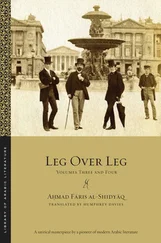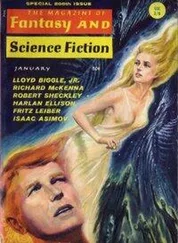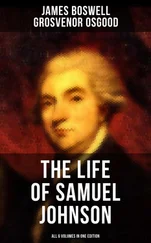187“Hind… Zaynab”: generic female names.
188“the ‘novel’ style”: poetry in the style called badīʿ , i.e., that relying largely on rhetorical and technical artifices.
189“That Which Is Long and Broad” ( Fī l-ṭawīl al-ʿarīḍ ): perhaps an allusion to the long, broad path facing the grammarian.
190“Zayd struck ʿAmr” ( ḍaraba Zaydun ʿAmran ): Zayd and ʿAmr are generic names used in sentences constructed to demonstrate grammatical rules.
191“the daughter of Abū l-Aswad al-Duʾalī” etc.: al-Duʾalī (d. 69/688) is known as “the father of Arabic grammar”; the story goes that his daughter said to him mā ajmalu l-samāʾ (“What is the most beautiful thing in the sky?”) when she intended mā ajmala l-samāʾ (“How beautiful the sky is!”), and he corrected her, thus starting the process of the recording and codification of “chaste speech.”
192“‘the ship sails’ or ‘the mare runs’”: these are two-step metaphors because the ship is propelled by the wind, which in turn blows at God’s behest, while the mare runs because she is made to do so by her rider, who is himself a creature propelled by God.
193“aeolian” ( ʿiqyawniyyah ): for a definition of the noun ʿiqyawn from which this adjective derives, see Volume Two (2.14.43).
194From this point, the nomenclature leaves the realm of reality and devolves into a series of fanciful and bizarre-sounding terms based largely on onomatopoeia ( farqaʿiyyah, qarqaʿiyyah , etc.) or, toward the end of the list, hapax legomena known only from a single line of ancient verse ( jaḥlanjaʿiyyah, ʿuṭrūsiyyah ) or having only a precarious foothold in the language (such as shunṭafiyyah , of which the Qāmūs says, “a colloquialism, mentioned by Ibn Durayd, who does not explain it”).
195“tongue-smacking” ( ṭaʿṭaʿiyyah ): according to the Qāmūs, ṭaʿṭaʿah is a sound one makes by “sticking the tongue against the hard palate and then masticating [? yanṭiʿ ] because of the good taste of something he is eating, so that a sound may be heard from between the palate and the tongue.”
196“panthero-dyspneaceous” ( khuʿkhuʿiyyah ): the word khuʿkhuʿ refers to a certain plant and thus does not lend itself to an onomatopeic interpretation; it may, however, be related to the verb khaʿʿa “to make a sound from the back of its throat when it has run out of breath running after its enemy (of a leopard).”
197“the skrowlaceous” ( ʿuhʿukhiyyah ): of this word the Lisān says, “Al-Azharī said, ‘We heard Khalīl ibn Aḥmad say, “We heard a hideous word, not to be permitted by the rules of word formation: a Bedouin was asked about his she-camel, and he said, ‘I left her grazing ʿuhʿukh .’ I asked reliable scholars, and they denied that this word could belong to the language of the Arabs.”’” The Qāmūs says that the word, meaning a certain medicinal plant, is a deformation of khuʿkhuʿ (see n. 196 above) and, as such, does not offer an obvious onomatoeic association.
198“skraaaghhalaceous” ( ʿuhkhaghiyyah ): the word is not found in the dictionaries.
199“the transtextual and the intertextual” ( kashaʿthajiyyah wa-kashaʿẓajiyyah ): the Qāmūs says of these words only that they are “recently coined” ( muwalladān ), without definition.
200“A book’s prologue” ( khuṭbat al-kitāb ): the invocation with which pre-nineteenth-century Arabic books usually begin, which weaves a statement of the work’s concerns into an encomium of the Prophet Muḥammad, his Companions, etc.
201“opposition” ( ṭibāq ): al-Ḥillī describes ṭibāq as consisting of “using two words of opposite meaning, so that it is as though the poet were opposing ( ṭābaqa ) the one to its opposite” (al-Ḥillī, Sharḥ 72).
202Al-Farrāʾ: Abū Zakariyyāʾ Yaḥyā ibn Ziyād al-Farrāʾ (144–207/761–822), a grammarian of the Kufan school, most famous for his grammatical commentary on the Qurʾān, entitled Maʿānī al-Qurʾān .
203 ḥattā : a particle (meaning approximately “until”) whose usage is complex.
204“ *nna ”: a particle (approximately “that”) whose initial vowel varies according to environment.
205“connective fāʾ ” etc.: on the copula fa- (consisting of the letter fāʾ plus a ) and its multiple uses and significations, see e.g., W. A. Wright, Grammar of the Arabic Language , 3rd ed., rev. W. Robertson Smith and M. J. de Goeje (Cambridge: Cambridge University Press, 1951), whose index cites ten distinct usages.
206al-Yazīdī: Abū Muḥammad Yaḥyā ibn al-Mubārak al-Yazīdī (d. 202/817 or 818) was the author of several works on grammar and lexicography; these have not survived, although anecdotes about him abound in anthologies (Meisami and Starkey, Encyclopedia 2:812).
207“connective wāw ” etc.: on the copula wa- (consisting of the letter wāw plus a ) and its multiple uses and significations, see e.g., Wright, Grammar , whose index cites five distinct usages.
208“the right-related… uses of lām ”: on the particles li- and la- (consisting of the letter lām plus i or a ), see e.g., Wright, Grammar , whose index cites seven distinct usages.
209al-Aṣmaʿī: Abū Saʿīd ʿAbd al-Malik ibn Qurayb al-Bāhilī al-Aṣmaʿī (122–213/740–828) was one of the most influential early lexicographers and philologists. Sixty of his works are extant, although it is not clear if any dealt with the orthographic issue raised here.
210“ aw … am ”: two particles that may be translated “or.”
211“[the words] qāʾil or bāʾiʿ ”: because the proscribed orthography— qāyil and bāyiʿ —might be taken to represent a colloquialized pronunciation.
212“when pronounced without vowels at the end” ( sākinan ): the author implies that most writers do not know enough grammar to use correct desinential inflections and their “concoctions” are therefore less offensive to the ear when read without them, in keeping with the adage sakkin taslam (“read without endings and be safe”).
213“the ‘doer’ and the ‘done’”: in Arabic grammatical terminology, the subject of a verb is referred to as the fāʿil (“doer”), the object as the mafʿūl (“done”). In the following, the author plays, as many have done before, on these and other, non-grammatical, meanings of the same words, e.g., “doer” in the sense of “manual worker” and “fucker,” and “done” in the sense of “fucked.”
214“‘raised’… ‘laid’”: the vowel u , called “raising” ( rafʿ ), is the marker of the subject, while a , called “laying” ( naṣb ), is, among other things, that of the object.
215“the doer of the…” ( fāʿil al-… ): perhaps meaning, in grammatical terms, “the subject of the verb” ( fāʿil al-fiʿl ), which in non-grammatical language would mean “the doer of the (dirty) deed.”
216“who are steadfast” ( min al-qurrāʾ al-ṣābirīn ): evocative of a number of passages in the Qurʾān, e.g., sa-tajidunī in shāʾa llāhu min al-ṣābirīn (“and, God willing, you will find me steadfast”) (Q Ṣāffāt 37:102).
217“switching persons” ( al-iltifāt ): a rhetorical figure consisting of an “abrupt change of grammatical person from second to third and from third to second,” as in the words of the poet Jarīr “When were the tents at Dhū Ṭulūḥ? O tents, may you be watered by ample rain!” (Meisami and Starkey, Encyclopedia 2:657).
Читать дальше












